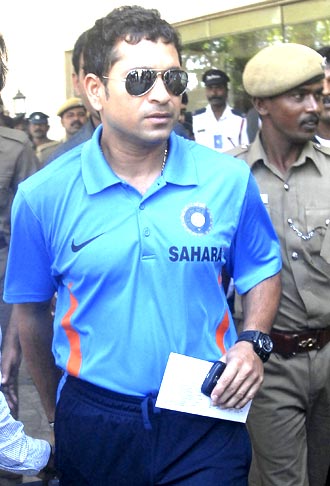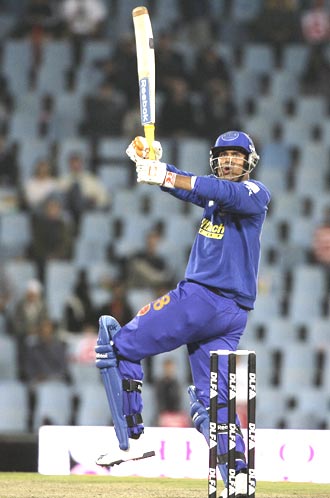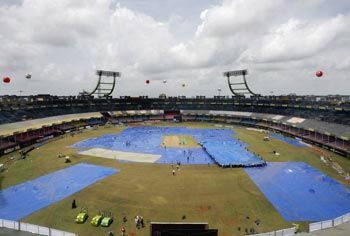
There's some confusion here that must be cleared right away.
Let's say Tendulkar and Sehwag open India's innings and after the first 25 overs, India are 156/2 with Tendulkar batting 52, Dravid batting 12 and Sehwag out for a typically blistering 74.
The confusion then is: a. does Sehwag come out to bat again in the second innings or b. do Tendulkar and Dravid resume India's innings?
I understand the Tendulkar proposal to mean b. although I note that the International Cricket Council's Dave Richardson probably thought it was a. and so went on to lament the probable demise of centuries in ODI cricket.

If you think about it, option (a) isn't particularly interesting. It would simply amount to the teams playing two T25 matches, with the winner being essentially the team that wins with a relatively bigger margin.
In what follows, we'll look at the possibilities with option (b). To reiterate, we are really talking of one 50-over innings split into two alternating halves. So it's still a 50-over ODI match in spirit.
Let me try to list some of the advantages (some of them have been already articulated before):
I also believe that such games will throw up richer and more novel playing strategies, especially if ICC opens up a little more. The 'super sub' for instance was a good idea, and the mid-innings break now provides a good opportunity for substitution.
In fact, while it's currently fashionable to deride poor John Buchanan for everything, his idea of multiple substitutes was quite decent.
Scoring patterns in 25+25 over situations too could change with perhaps three high-scoring peaks instead of two. I see someone like Yusuf Pathan being a great gamble to take between overs 21 to 25.

Would D/L like the 25+25 split?
We'll need to enumerate different interruption scenarios and check out -- and I can see that some scenarios will be quite messy -- but my gut feeling is that D/L would go through fine, especially as long as we're looking at a 50-over total game.
The D/L model for 50-over games is now well-validated, it's only the charade of pretending that it works in 20-over matches that bothers me.